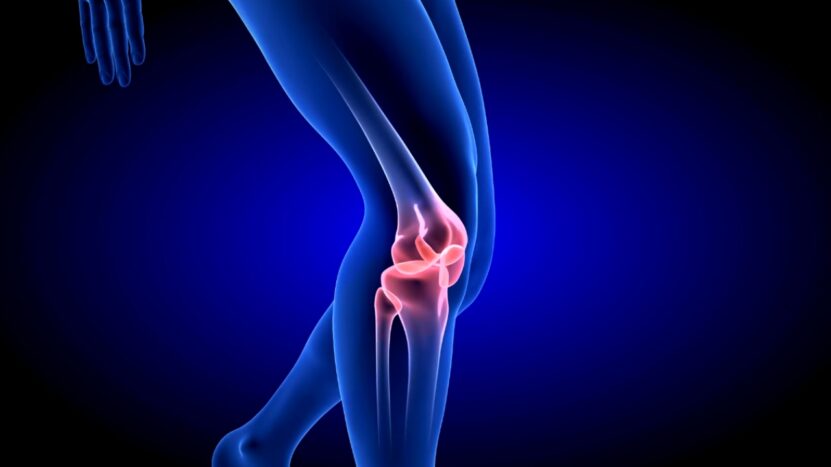Rebounding, a popular form of exercise that involves bouncing on a mini-trampoline, has taken the fitness world by storm. It offers a low-impact, full-body workout that can improve cardiovascular health, strengthen muscles, and boost lymphatic circulation. Enthusiasts laud it as a fun and effective way to exercise, claiming that it can even help with weight loss, detoxification, and stress reduction. But is rebounding really the panacea it’s made out to be?
This blog post will delve into the lesser-known negative side effects of rebounding. We’ll discuss how it may impact joints and bones, the spine and lower back, and the cardiovascular system. We’ll also explore the potential for injuries and the psychological effects of rebounding, comparing it with other low-impact exercise options. By the end, you’ll have a well-rounded understanding of the pros and cons of rebounding and tips for safe and effective practices.
Explanation of What Rebounding Is and How It Works

Rebounding is a form of aerobic exercise performed on a mini-trampoline, or rebounder, which provides a unique combination of gravitational and acceleration forces. As you bounce on the rebounder, you experience an increase in gravitational force (G-force) at the bottom of the bounce and a feeling of weightlessness at the top. This G-force effect works every muscle in your body, including the all-important core muscles, and helps to increase lymphatic circulation.
It is considered a low-impact workout because the flexible surface of the rebounder absorbs most of the shock, reducing the stress on your joints and bones. This makes it an appealing option for individuals who may have joint issues or who are seeking a gentler alternative to high-impact exercises like running or jumping.
The Negative Side Effects

While it is often touted as a low-impact workout, it’s not without its potential drawbacks. One major concern is the impact it can have on joints and bones, especially for those with pre-existing conditions like arthritis or osteoporosis. The repetitive stress of bouncing can aggravate joint pain and inflammation and may even increase the risk of injury.
Additionally, those who are new to rebounding may experience soreness or discomfort in their ankles, knees, and hips as their bodies adjust to the new movements. It’s crucial to pay attention to proper form and gradually increase the intensity of workouts to minimize these negative side effects.
Negative Effects on Lymphatic Drainage
Rebounding is a popular form of exercise that involves jumping on a mini trampoline, which can have many health benefits, including improved cardiovascular health, muscle strength, and balance. However, there are also some negative effects associated with it, particularly when it comes to lymphatic drainage. The lymphatic system plays a crucial role in maintaining the body’s immune system and removing toxins and waste from the body.
When the lymphatic system is not functioning correctly, it can lead to a range of health issues, including swelling, inflammation, and infection. One of the negative effects of rebounding is that it can cause lymphatic congestion, which occurs when the lymphatic system becomes overwhelmed and cannot keep up with the demand to remove waste from the body. This can lead to the accumulation of toxins in the body, which can lead to a range of health problems.
It can cause inflammation in the lymphatic system, which can further compromise its ability to function correctly. This can lead to a range of health problems, including reduced immunity, fatigue, and joint pain.
Impact on the Spine and Lower Back

Another concern with it is its potential impact on the spine and lower back. The bouncing motion can place stress on the intervertebral discs, which act as shock absorbers between the vertebrae. This may lead to disc herniation or other spinal issues, particularly for those with pre-existing back problems or weak core muscles.
To protect your spine and lower back while rebounding, it’s essential to maintain proper posture and engage your core muscles throughout the workout. Avoid bouncing too high or performing advanced moves before you’re ready, as this can increase the risk of injury.
Potential for Injuries
Despite its reputation as a safe, low-impact workout, rebounding does come with some risk of injury. Common injuries include sprains and strains, particularly in the ankles, knees, and lower back. Additionally, there’s the potential for falls, which could result in more serious injuries like fractures or concussions.
To minimize the risk of injury, it’s crucial to invest in a high-quality rebounder with a sturdy frame and non-slip surface. Practicing proper form, wearing supportive footwear, and using safety features like handlebars or enclosures can also help reduce the likelihood of accidents. Moreover, always listen to your body and stop if you experience pain or discomfort during your workout.
Potential for Allergic Reactions
Most rebounders are made of synthetic materials, such as rubber or PVC, which may contain chemicals that can trigger allergic reactions in some people. Allergic reactions can range from mild skin irritation to more severe symptoms, such as difficulty breathing or anaphylaxis. Individuals with known allergies or sensitivities to rubber or synthetic materials should take caution when selecting rebounding equipment.
It is essential to read the labels and product descriptions carefully to ensure that the equipment does not contain any allergens. Additionally, it may be helpful to choose equipment made of natural materials, such as cotton or wool, which are less likely to cause allergic reactions. It is also important to keep rebounding equipment clean and free of dust, mold, and other allergens. Regularly wipe down the equipment with a damp cloth and disinfectant to prevent the buildup of bacteria or other irritants.
Effects on the Cardiovascular System
While it can be an excellent form of cardiovascular exercise, it’s not without its potential negative effects. The repetitive bouncing motion can cause an increase in blood pressure, which may be problematic for individuals with pre-existing hypertension or cardiovascular issues. Additionally, the intense nature of some rebounding workouts may not be suitable for those with heart conditions or who are new to exercise, as it could place excessive strain on the heart.
To ensure that rebounding is safe and beneficial for your cardiovascular health, it’s important to consult with a healthcare professional before starting a new exercise regimen. Modify your workouts to match your fitness level, and gradually increase intensity as your cardiovascular endurance improves.
Impact on Muscle Development

Rebounding can certainly help with muscle development and toning, but it’s important to note that it primarily targets the muscles in the lower body and core. This means that while it can be an effective workout for the legs, glutes, and abdominals, it may not provide the same benefits for the upper body or promote overall muscular balance.
To ensure a well-rounded workout, consider incorporating other forms of strength training or exercises that target the upper body, such as resistance bands, free weights, or bodyweight exercises like push-ups and pull-ups. This will help promote overall muscle development and prevent potential imbalances that could lead to injury.
Impact on Pre-Existing Medical Conditions
While it has several health benefits, it may not be suitable for individuals with pre-existing medical conditions. It is crucial to consult a healthcare professional before starting a routine, especially if you have any medical conditions or concerns. The high-impact nature of rebounding can exacerbate certain medical conditions, such as joint pain, arthritis, or osteoporosis. It can put excessive strain on the joints, especially the knees and ankles, which may lead to further complications.
Individuals with pre-existing medical conditions that affect their balance or coordination, such as vertigo or inner ear problems, should also approach rebounding with caution. Rebounding may also affect individuals with cardiovascular issues, such as high blood pressure or heart disease.
The sudden and intense movements involved in rebounding can raise the heart rate and blood pressure, putting additional stress on the cardiovascular system. Similarly, individuals with respiratory problems, such as asthma or COPD, should avoid rebounding due to the increased demand for oxygen during exercise.
Psychological Effects

The psychological effects of rebounding can be both positive and negative. On the positive side, the fun and energetic nature of rebounding can boost mood, reduce stress, and improve overall mental well-being. However, it’s essential to recognize that the repetitive nature of rebounding can also lead to boredom, burnout, or a lack of motivation if it’s the sole form of exercise in your routine.
To keep things interesting and maintain motivation, consider varying your workouts by incorporating other forms of exercise or attending group classes that incorporate rebounding. This can help keep your fitness routine fresh and enjoyable, promoting long-term adherence and success.
FAQs
What are the psychological effects of rebounding?
It can boost mood, reduce stress, and improve overall mental well-being due to its fun and energetic nature. However, the repetitive nature of rebounding can also lead to boredom, burnout, or a lack of motivation if it’s the sole form of exercise in your routine.
How does rebounding compare with other low-impact exercise options?
It is one of many low-impact exercise options, with others including swimming, cycling, walking, yoga, and Pilates. Each activity offers its unique set of benefits and potential drawbacks, so it’s essential to consider your personal needs, preferences, and limitations when selecting the best exercise for you.
Can I rebound if I have joint or bone problems?
It’s essential to consult with a healthcare professional before beginning a rebounding regimen if you have joint or bone problems. They can assess your individual needs and determine if rebounding is a suitable exercise option for you, or if alternative low-impact exercises might be more appropriate.
How often should I rebound for optimal results?
For optimal results, it’s generally recommended to engage in these workouts at least three times a week, with each session lasting 20-30 minutes. However, your specific goals, fitness level, and personal preferences will ultimately determine the frequency and duration of your rebounding workouts.
Can rebounding help with weight loss?
It can contribute to weight loss by burning calories and increasing your metabolic rate. However, weight loss results will vary depending on factors such as workout intensity, duration, and frequency, as well as your overall diet and lifestyle.
Are there any specific rebounding techniques or exercises that can help minimize negative side effects?
To minimize negative side effects, focus on maintaining proper form and posture, engaging your core muscles, and keeping your movements controlled and low to the rebounder’s surface. Gradually progress to more advanced exercises or higher-intensity workouts as your fitness level and comfort with rebounding improve.
Can I combine rebounding with other exercises for a more comprehensive workout routine?
Yes, combining it with other forms of exercise can create a more comprehensive and well-rounded workout routine. Consider incorporating strength training, upper body exercises, or other low-impact activities like yoga or Pilates to promote overall muscle development, prevent potential imbalances, and keep your fitness routine fresh and engaging.
Conclusion
In conclusion, it can be a fun and effective form of low-impact exercise that offers numerous health benefits. However, it’s essential to be aware of the potential negative side effects, including the impact on joints and bones, the spine and lower back, and the cardiovascular system. There’s also the potential for injury and the psychological effects of a repetitive workout.
To enjoy the benefits of rebounding while minimizing the risks, be sure to practice proper form, invest in a high-quality rebounder, and gradually increase the intensity of your workouts. Additionally, consider incorporating other forms of exercise into your routine to promote overall muscle development and prevent boredom or burnout. Consult with a healthcare professional before beginning a new exercise regimen, especially if you have pre-existing health conditions or concerns.

